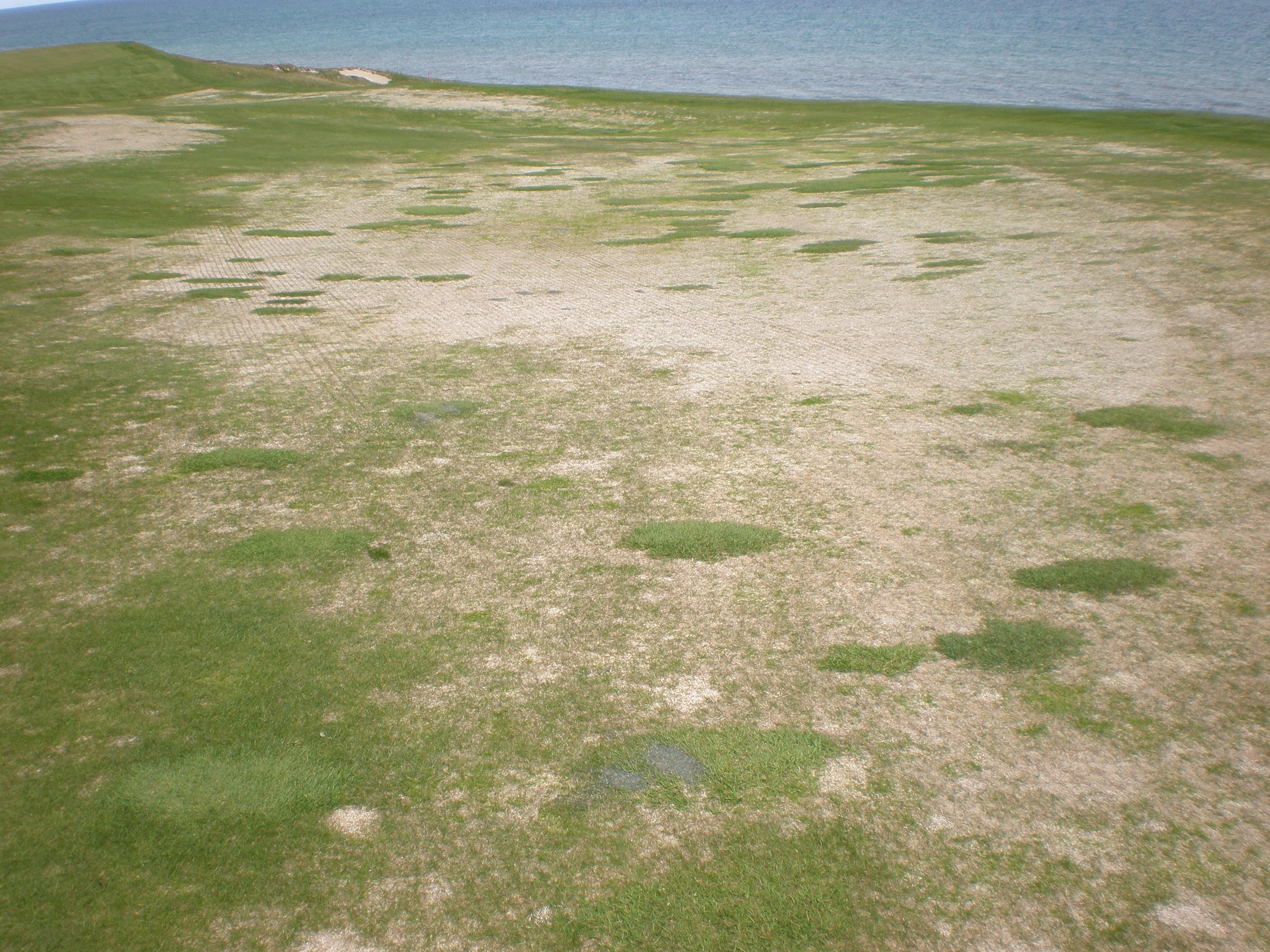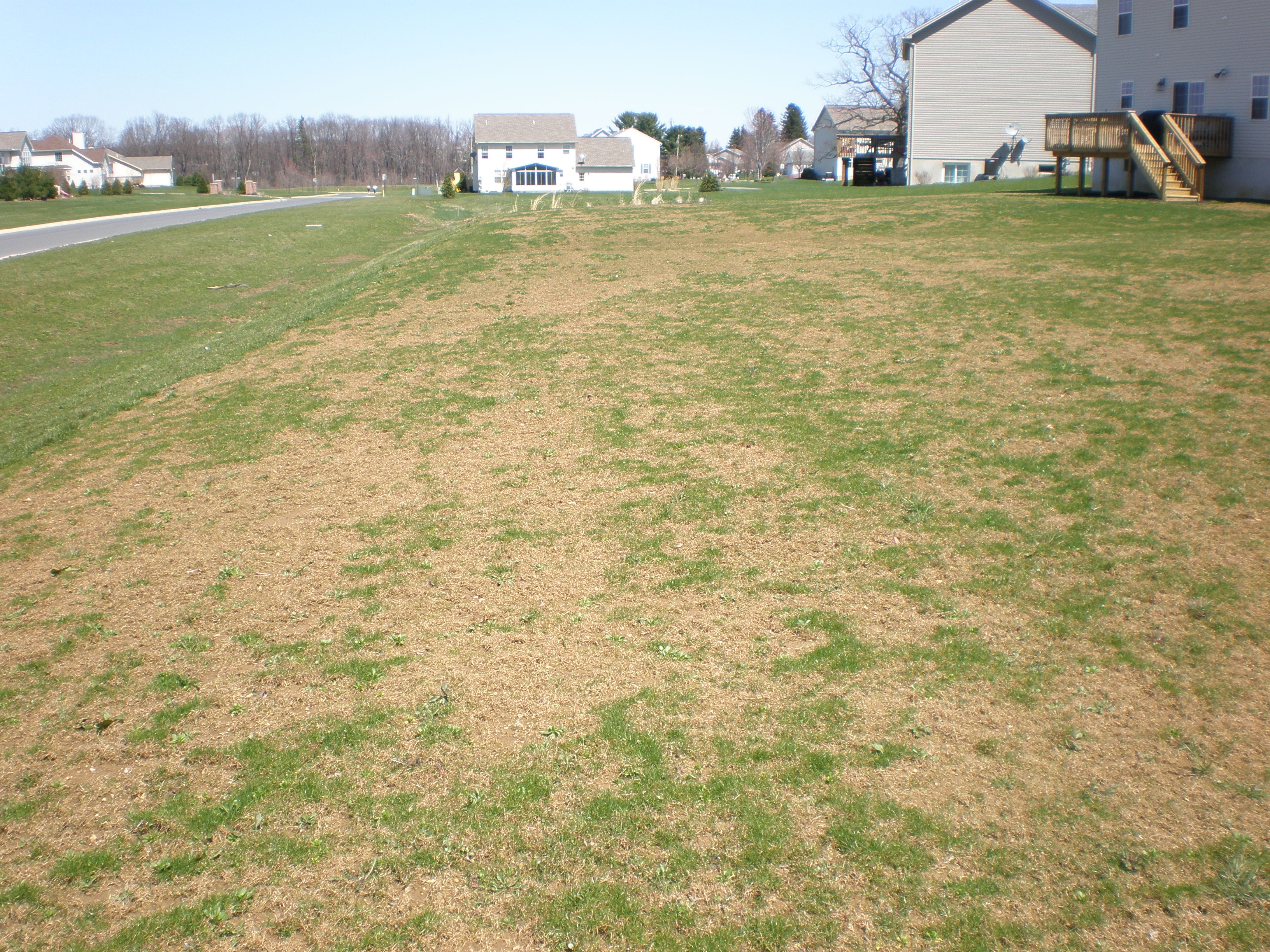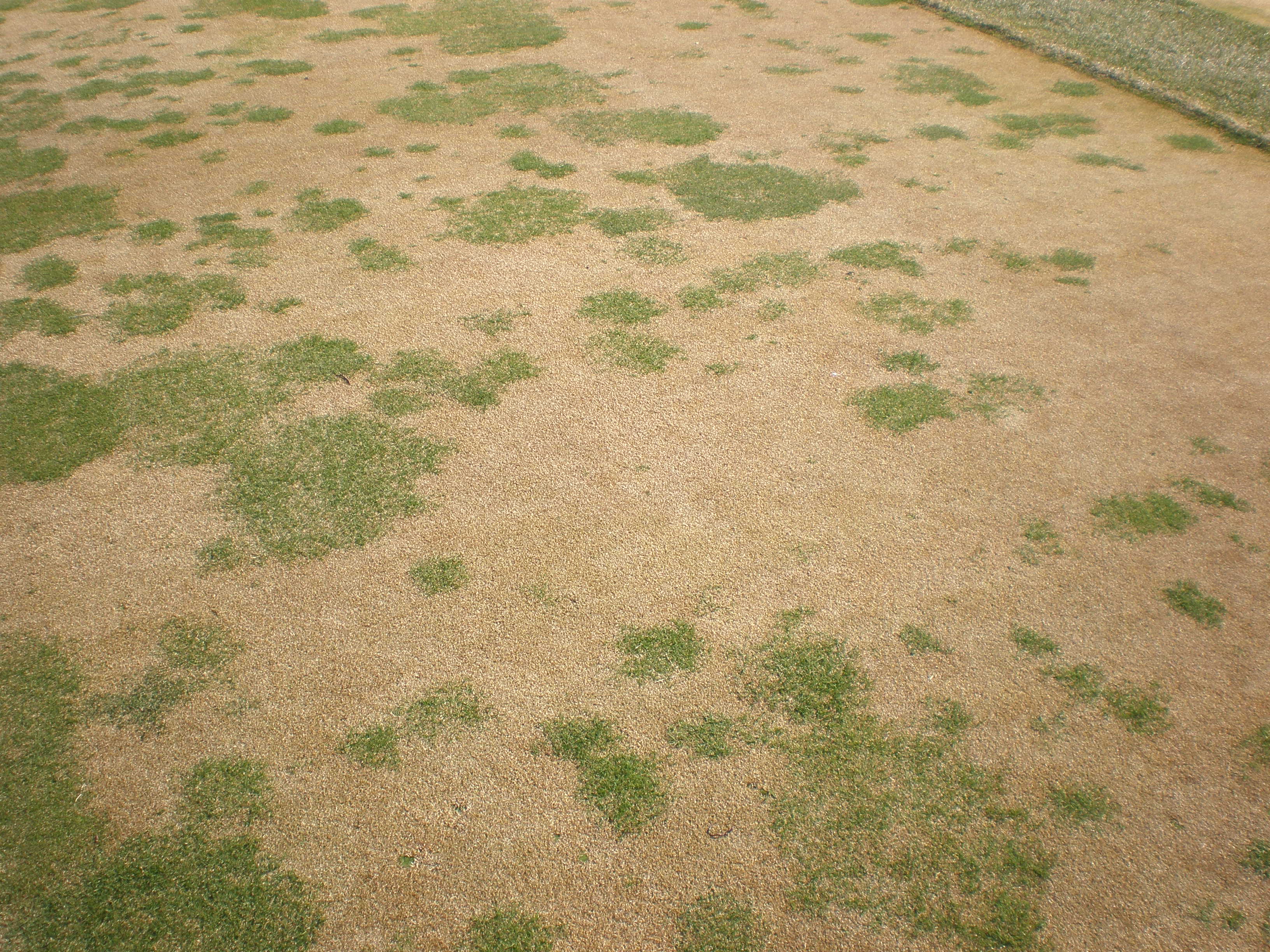Winterkill Damage on Turfgrass in Central Pennsylvania
April 21, 2014 in Articles, Extension
Peter Landschoot, Prof. Turfgrass Science, Penn State
The bitter cold and icy conditions during the winter of 2013/14 revealed “spotty” instances of winterkill on golf courses, lawns, and sports turf this spring. While the exact cause is unclear, relatively warm temperatures in the third week of February (highs ranging from 45 to 50°F) may have allowed crown tissues of annual bluegrass and perennial ryegrass to become hydrated and thus, more susceptible to freezing injury. Unfortunately, temperatures dropped to as low as -1°F the following week, and this may have resulted in freezing of crown tissue and plant death. A brief description of the causes and management of turfgrass winterkill are provided in the following paragraphs.
Causes of winterkill
Winterkill is a generic term used to describe death of turfgrasses during the winter months, and can be caused by abiotic factors and/or disease. The four types of abiotic winterkill observed in the northern United States include desiccation, direct low temperature kill, ice encasement, and crown hydration.
Desiccation
Desiccation occurs when turf is unprotected by snow cover and subject to drying cold winds for extended periods during the winter. Under these conditions, the exposed turf can lose significant moisture in crown tissues (where new roots, leaves, and stems are produced), resulting in death of the plant. This type of damage is most frequently observed on susceptible species growing on elevated sites exposed to prevailing winds. Desiccation is most common on annual bluegrass putting greens, but can also occur on golf course fairways, lawns, and sports turf. All cool-season turfgrasses can suffer from winter desiccation injury.
Fig. 1. Desiccation injury on fine fescue fairway in Wisconsin.
Preventative measures to reduce winter desiccation include heavy sand topdressing applications in late fall, fabric covers, and various types of wind screens around sensitive areas.
Direct low temperature kill
Turfgrasses can sometimes be damaged by a phenomenon known as direct low temperature kill. This type of winterkill occurs during extremely cold temperatures early in the winter following a relatively warm period in late fall. Typically, plant tissues undergo a dehydration process in late fall in response to gradually decreasing temperatures and shorter photoperiods. The dehydration process is accompanied by an increase is cellular solutes (potassium ions, sugars, etc.), allowing the plants to “harden off” or tolerate freezing temperatures. Warm weather during late fall can delay the hardening process and allow plants to become susceptible to ice formation in crown tissues with the advent of a sudden and dramatic drop in temperatures.
Fig. 2. Direct low temperature kill on a new stand of perennial ryegrass.
Although direct low temperature kill is difficult to prevent, measures that may help protect plants include avoiding excess nitrogen fertilization in mid fall before plants begin to harden off, and seeding susceptible species early enough in late summer/fall so that they have time to mature and develop an ability to acclimate to cold temperatures later in the season.
Ice encasement
Turf death due to ice encasement occurs when a thick covering of ice over turf causes a reduction in gas exchange between ice-encased turf and the atmosphere. As the semi-dormant turf under the ice continues to respire, oxygen is depleted and a buildup of toxic gasses such as carbon dioxide, butanol, and ethyl butyrate occurs. Oxygen depletion and toxic gasses can kill turf when thick ice coverings last for weeks or months during the winter.
The thickness of ice, duration of encasement, grass species, and condition of turf under the ice all dictate the degree of damage that will occur. Therefore, predicting damage based on the number of days that ice covers turf is not reliable. Nevertheless, some authors suggest removing substantial ice layers from annual bluegrass and perennial ryegrass after 30 to 45 days. Creeping bentgrass can withstand longer periods under ice than annual bluegrass.
Various measures have been employed to reduce damage due to ice encasement. One preventive measure used in northern climates with regular episodes of winterkill includes covering putting greens with semipermeable covers, then adding insulating layers of straw, and covering the straw with impermeable covers. Whereas this method is somewhat effective, it is labor intensive and often not practical in areas where winterkill occurs only once in 10 or 20 years. In Pennsylvania, it is more common to remove ice from putting greens using dark-colored melting agents, such as black sand or Milorganite fertilizer; or with aerators, hand tools, and small tractors equipped with scraping or lifting accessories. Due to the possibility of turf damage, extreme care must be used when attempting to remove ice from putting green surfaces.
Crown hydration
Crown hydration is the most common and destructive type of abiotic winter injury, and usually occurs in late winter following periods of thawing and freezing. During late February and March, temperatures often rise above freezing for a few days at a time. When this happens, some turfgrasses (most notably annual bluegrass and perennial ryegrass) begin to de-harden and crowns become hydrated. If a rapid freezing event follows the thaw, ice forms inside the crowns of hydrated turfgrasses and either ruptures cell membranes (when ice forms inside of cells), or draws moisture out of cells (when ice crystals form between cells).
Crown hydration injury is most pronounced on turfgrasses growing in depressions and poorly-drained soils. During warming periods in late winter, surface soil temperatures rise and some thawing takes place. However, soil remains frozen beneath the surface and water does not drain from depressions. As water from thawed snow and ice collects in depressions, turf residing in these areas becomes super-hydrated. When water refreezes during a rapid and dramatic drop in temperature, these super-hydrated plants are killed.
Fig. 3. Crown hydration damage on annual bluegrass putting green. Green patches are creeping bentgrass.
Crown hydration events are impossible to predict, and there is very little turf managers can do to prevent these situations. The best way to reduce crown hydration problems is to avoid practices that force susceptible plants into early emergence from winter dormancy, and to employ measures that improve surface drainage on sensitive sites.
Assessing recovery from winterkill
Sometimes an area of grass will appear dead, but many plants still possess viable crown tissues. Turfgrass managers can assess recovery potential by taking plugs of damaged turf and placing these in a warm, well-lighted area for several days or weeks to determine if regrowth occurs. Just because a few tillers emerge from the plugs does not necessarily mean the turf will fully recover, but this method can help turf managers decide on whether reseeding will be required.



Hey there! Would you mind if I share your blog with my facebook group?
There’s a lot of folks that I think would really appreciate your content.
Please let me know. Thank you
Yes, go ahead.